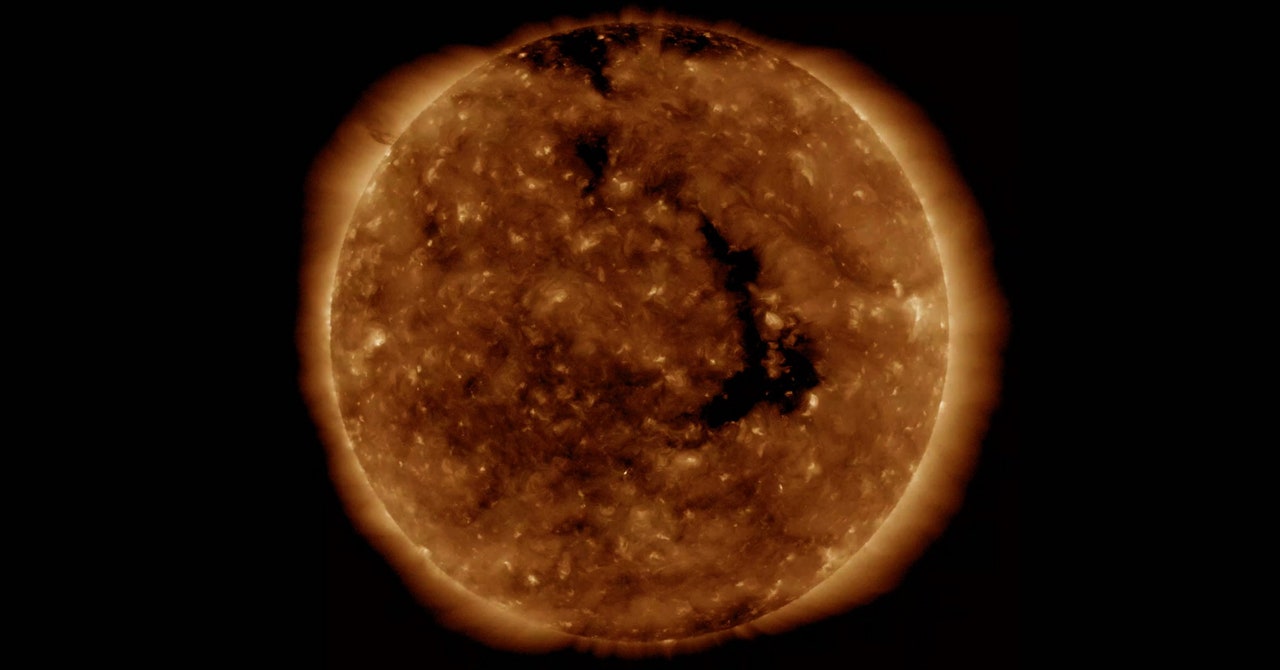
Streaming out of the sun at a million miles an hour, the solar wind—a blistering plasma of electrons, protons, and ions flowing through space—is a decades-old enigma. Scientists know it once stripped Mars of its atmosphere, and some think it put ice on the moon. Today, it causes the glimmering Northern Lights displays and messes with satellite communication systems. But researchers haven’t been able to nail down how the solar wind gets made, heats up to millions of degrees, or accelerates to fill the entire solar system.
Now, a team of researchers think they’ve figured it out: The solar wind, they say, is driven by jetlets—tiny, intermittent explosions at the base of the sun’s upper atmosphere, or corona. The theory, which was just published in The Astrophysical Journal, emerged from data taken by NASA’s Parker Solar Probe, a car-sized satellite that has repeatedly flown by the sun since 2018. It measures properties of the solar wind and traces the flow of heat and energy in the outermost part of the sun’s atmosphere that begins about 1,300 miles above its surface. The team’s idea is strengthened by data from other satellites and ground-based telescopes showing that jetlets could be ubiquitous and powerful enough to account for the mass and energy of the solar wind. Uncovering its origins will help scientists better understand how stars work, and predict how the gusty flow of plasma affects life on Earth.
Higher resolution data is needed to prove this hypothesis, but the evidence so far is tantalizing. “We sensed from early on that we were onto something big,” says Nour Raouafi, an astrophysicist at Johns Hopkins University’s Applied Physics Laboratory who led the study. “We were thinking that we might be solving the 60-year-old puzzle of the solar wind. And I believe we are.”
The existence of solar wind, first proposed by the late Eugene Parker—namesake of the Parker Solar Probe—was confirmed by NASA in the early 1960s. Since then, scientists have been perplexed by how that plasma can move as far and as fast as it does. The sun’s corona is hot—millions of degrees on any temperature scale—but not hot enough to push the solar wind to those speeds.
Jetlets, on the other hand, weren’t discovered until 2014, in a study led by Raouafi showing that these mini explosions drive coronal plumes, bright funnels of magnetized plasma near the solar poles. Looking closely at the base of the plumes, he found that jetlets arise when the sun’s churning surface forces two regions of repelling magnetic polarity together until they snap. But after that paper, Raouafi moved on to other projects. “And we basically left it there,” he says.
Then in 2019, while Raouafi was working as a project scientist on the Parker Solar Probe, the craft saw something weird. As it skimmed the top of the corona, it observed that, quite often, the direction of the magnetic field it was flying through would flip. Then it would flip back. Raouafi assembled a team to hunt down a source of these intermittent “switchbacks” lower in the atmosphere. His mind immediately went to jetlets. If they could be found elsewhere in the corona, and not just in its plumes, he reasoned, they might be numerous enough to generate enough material and power to be the solar wind itself.


